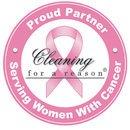Getting Rid of Mold and Mildew in the Bathroom
Mold and mildew are common problems in many households, and it is especially common in the bathroom. Bathrooms with showers are particularly susceptible to mold and mildew growth because the steam creates excess moisture, and moisture is what causes mold and mildew to develop.
Fortunately, there are a number of steps that one can take to rid their bathroom of mold and mildew. Fighting mold and mildew with acids is one great way to combat the problem. There are also various methods for preventing mold and mildew from growing as well, and all of these steps are simple to take. The following article from Mrs. Clean explains the best methods.
How to Get Rid of Mold and Mildew in the Bathroom
If you're having trouble getting rid of mold and mildew, you're not alone. Mold and mildew thrives in dark, damp places with high humidity and low ventilation, so it's the bane of every bathroom cleaner.
Mold and mildew will grow in the shower, on the tub, tiles, walls and floor. It grows quickly in areas with standing water, but given enough time and the right conditions, mold and mildew will even grow on shower curtains and painted walls too.
Soap scum, skin and body oils (yuck!), and any other decaying material- even rotting wood or certain chemicals will fuel its growth in the right environment.
Here's exactly how to clean it all up and keep it from coming back!
Regular Cleaning:
Vinegar and Water:
Mold and mildew will not grow in an acidic environment. Plain white vinegar is a mild acid, it kills mold and mildew and makes the environment less hospitable for further growth.
Because vinegar is a natural deodorizer, once it dries the bathroom will not just look better, it will smell better too.
Start by using a mixture of 50/50 white vinegar and water. Pour ½ cup of each into a spray bottle and shake. Spray on all of the surfaces in the shower, let stand for 5 to 10 minutes and then wipe it all down with a damp sponge.
Vinegar and Baking Soda:
Baking soda added to the cleaning solution has the added benefit of being a mild abrasive, and provides additional deodorizing power.
Mix ½ cup of vinegar and ½ cup of baking soda in a bowl and stir gently. Take a sponge and spread the paste on the shower walls, and allow it to stand for 10 minutes or so. Use a sponge or plastic bristle brush to scrub it down and rinse completely with warm water.
Heavy Duty Cleaning:
Vinegar Only:
If you are cleaning a heavy build up, use 100 percent undiluted plain white vinegar. Pour it in a spray bottle, spray the shower and let it stand for 5 to 10 minutes. Use a pot scrubber with plastic bristles, grout brush or an old toothbrush to clean it up before rinsing and wiping it down.
Chlorine Bleach: Dilute ¼ to ½ cup of household bleach per each gallon of water used. Spray on the tiles and scrub with a plastic bristle brush. When you are finished scrubbing, rinse completely to remove all traces because any remaining bleach will make surfaces very slippery.
Note: Use caution when using bleach. Bleach is highly alkaline and will burn you just as easily as an acid will. Wear a pair of rubber gloves and protective goggles to keep any splashes out of your eyes.
If you're working in a very small bathroom without much air circulation, turn on the fan, open a window and you might want to wear a mask.
Never mix bleach with any other cleaner especially ammonia, as this will create potentially deadly fumes.
Preventing Mold and Mildew: There are things you can do to prevent mold and mildew regrowth. The way to do this is to change the environmental conditions in the bathroom: reduce dampness, increase air circulation and light.
1. Reduce Humidity: Use the fan when bathing or showering, and leave it after you are finished until all traces of dampness are removed from the air.
2. Increase Light: Keep the light on, open the window curtains to let the daylight in.
3. Increase Air Flow: Open the window if you can to let some fresh air in. This will increase air circulation which reduces odors as well.
4. Keep it Dry: If you make it a habit to dry the tub or shower after using it the mold and mildew will not have a chance to grow. A small squeegee is really helpful in removing all traces of water after showing.
5. Keep it Clean: An after shower wipe down also removes remaining debris on the shower or tub walls and floor so there will not be a food source for it to grow on.
If mold and mildew are prevalent problems in your bathroom, be sure to take the correct steps towards preventing more mold and mildew appearing in the future. One great way to prevent shower moisture from growing mold in your bathroom is by opening a window during and after showers.
Need more assistance with your mold and mildew problem? Contact The Maids. We’d love to help you with any of your home cleaning needs!







